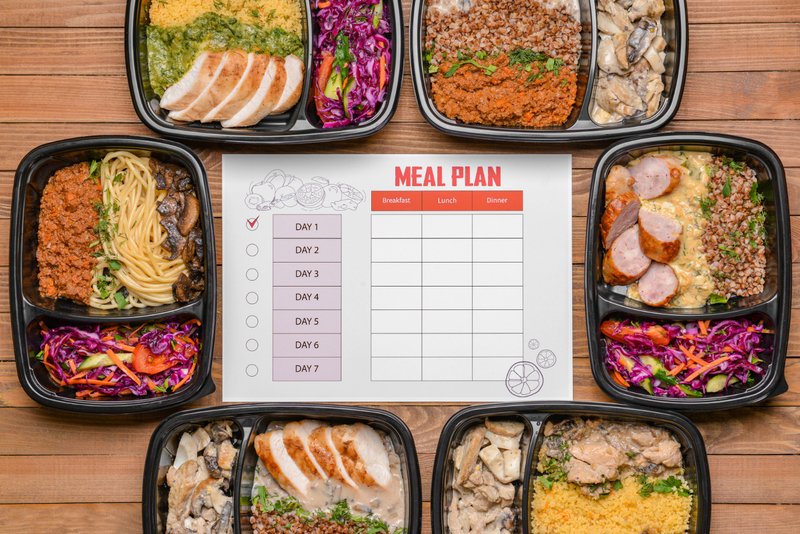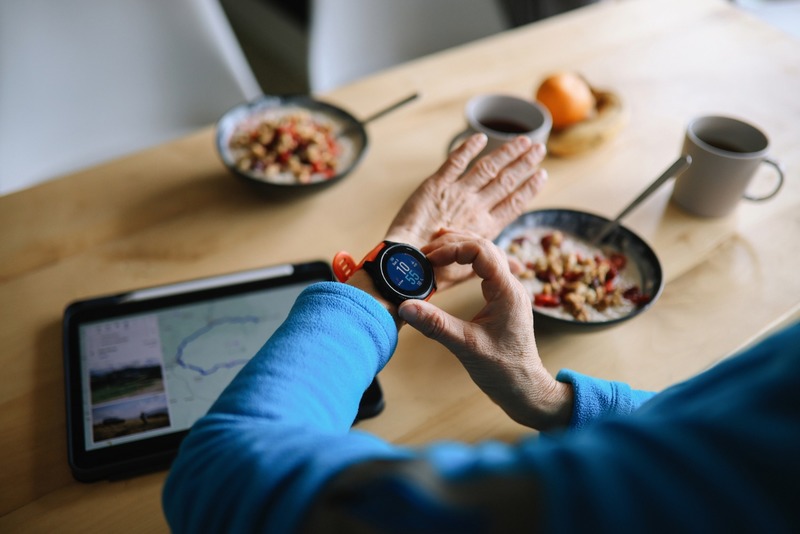News
Meal Planning Made Easy with Melaine Hendershott

Melaine Hendershott, RDN, CSO is the Spirit of Survival registered dietitian at Shaw Cancer Center. Melaine received her Master's degree in nutrition and is board certified in oncology nutrition. At our April 3rd event, she discussed meal planning, common deficits in your diet, and how to combat them with things you can eat. She also provided tips and tricks for your weekly grocery shopping trip.
Nutrition is vital to our health. I love my job as a RDN because I get to take the power of food and share it with others. I work as an oncology dietitian and it’s so inspiring. I get a front row seat on how the foods we choose literally saves lives. I love how Dr. Vickerman said that nutrition is more important than our prescriptions and when I explain to my patients how powerful food and nutrition is and how they can use that to prevent cancer recurrence they are just blown away.
In the spirit of Lilia’s recommendation to “eat real food, no too much and mostly plants”, we want to fill our plates with at least ½ from fruits and non-starchy vegetables. When my son was in preschool, a friend asked him since his mom was a dietitian, what do we usually eat for dinner. His reply was “salad and something”.
So when we’re talking about non-starchy veg, these are the ones you don’t have to cook to eat such as greens, carrots, broccoli, and other vegetables you would think to have in a raw salad or veggie tray. The starchy veg are the ones you typically cook sweet potatoes, winter squash, legumes like beans and corn- This is also the space for grains like oats, wheat, brown rice, and barley. Look for the highest fiber and most nutritious versions of grains such as sandwich thins, low-carb or corn tortillas, low-sugar high fiber cereals and sprouted grain breads. Then ¼ of your plate as lean proteins like beans, nuts/seeds, poultry, fish and some red meats.
So if we fill our plates like this then we have to plan our meals and fill our grocery carts like this. Where ½ your cart is fruit and veggies and ½ is from starches, grains and proteins. We did include a 7 day menu meal plan handout for your reference, but I find that breakfast is easy to plan because I eat the same thing most days, lunches- easy to plan with eating leftovers, and salads with protein. So we're going to concentrate on what's for dinner?
When you’re planning your meals you want to think about all the vegetables you want to include and then what your starches and protein is going to be. So if you’re thinking tacos, think about how you can incorporate more veggies such as making pico de gallo, adding cabbage, peppers, sweet potato, zucchini, corn, avocados, etc. Rather than just shredded chicken or ground beef in tortillas.
This all starts with a meal plan.
If you're anything like me, you don’t need to plan 7 different dinners. Start with 1 meatless meal/week. I love meatless Mondays because they turn into meatless Tuesdays and sometimes Wednesdays, too. I always say when you cook vegetarian, it grows and when you cook meat it shrinks. So when you think about making beans, you soak them and they grow and then you cook them and they grow again. So making beans = lots of leftovers. And I love leftovers because then I can incorporate them into more meals and less meal prep.
Then look at adding another 2-3 meals for the week.
Make sure to look at what you already have on hand. I hate it when I get home from the store and realize I already have more than enough at home. Look at what you have on your shelves and in your freezer that can be a base for a meal.
I often get asked what my favorite cookbook is. I always say Google. You can find any recipe or food ideas from the internet. Add extra search words such as healthy, low sodium, low fat, low carb to any of your favorite foods and the modifications are there for you. Or enter in foods you already have on-hand to search and you can find a recipe using those specific ingredients. Or ask how to use up a leftover item and it will give you recipes to use up extra rice or potatoes you have already cooked from a previous meal.
Once you have a few meals planned and have checked what items you already have on-hand, start making your grocery list. Try to have a regular 1 or 2 days per week you do your shopping. I love using grocery apps on my phone. I fill out the app like I’m going to order it online and pick it up. Then coupons and other discounts pop up and I can click them so I’m saving all I can at checkout. As items come up that I need while food prepping or looking at recipes, I can go to the app, search for the item and add it to my order. I typically just go inside and shop, but if I know I’m running short on time I can always order it for pick up with 1 click. I also included a grocery list handout to help identify the healthiest items on every aisle of the store.
Check out our handout that has a 7 day meal plan. It has ideas for breakfast, lunch, dinner and snacks. If I were to meal prep this much, I would go crazy! So take the meal ideas and use them as bases for healthy ideas. I find myself eating basically the same thing for breakfast, such as yogurt with low or no added sugar cereal and fruit or I make oat, protein pancakes. Lunches - I used to have a client who would slow cook several chicken breasts on Sundays and make a large salad and eat that all week. I use a lot of leftovers for lunches as well. And if you plan out your meals then dinners become a lot less of a stress.
More News
-
New!
More

First Chair to Last Call: What Does Alcohol Really Mean For Your Health?
In nearly every Colorado ski town, some iteration of the neon sign blares its play-hard-party-harder anthem. It’s a not-so-subtle nod to mountain party culture, a lifestyle that normalizes combining sports and outdoor adventures with heavy drinking and partying. In Eagle County, après culture, high-altitude living and outdoor performance have coexisted for as long as locals have been sliding on snow. But how much is too much at altitude? And what role do social support systems play in helping residents find balance?
-
New!
More

Counting More Than Steps: How Wearables Can Help (or Hinder) Your Health
From step counts to sleep stages, heart rate variability to blood sugar spikes, wearable devices are giving us a front-row seat to what’s happening inside our bodies. Strapped to wrists, slipped onto fingers or wrapped around our biceps, wearables like the Oura Ring or Whoop strap promise insight and advice in the quest for better health.
-
More

Cass Barham and Sarah Crabtree Honored As Recipients of Vail Health Elevate Award
Cass Barham and Sarah Crabtree, both lab techs at Vail Health Hospital, have been named recipients of the Vail Health Elevate Award. Vail Health created the Elevate Award in June 2022 to give patients and their families an opportunity to nominate and thank employees who have touched their lives in some way.
